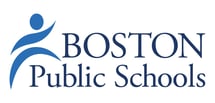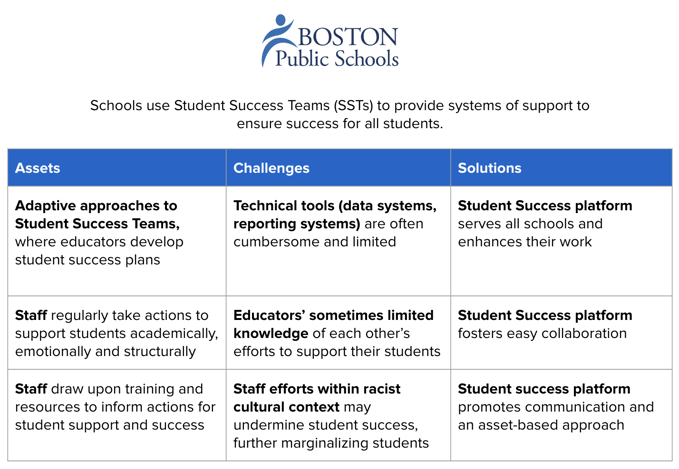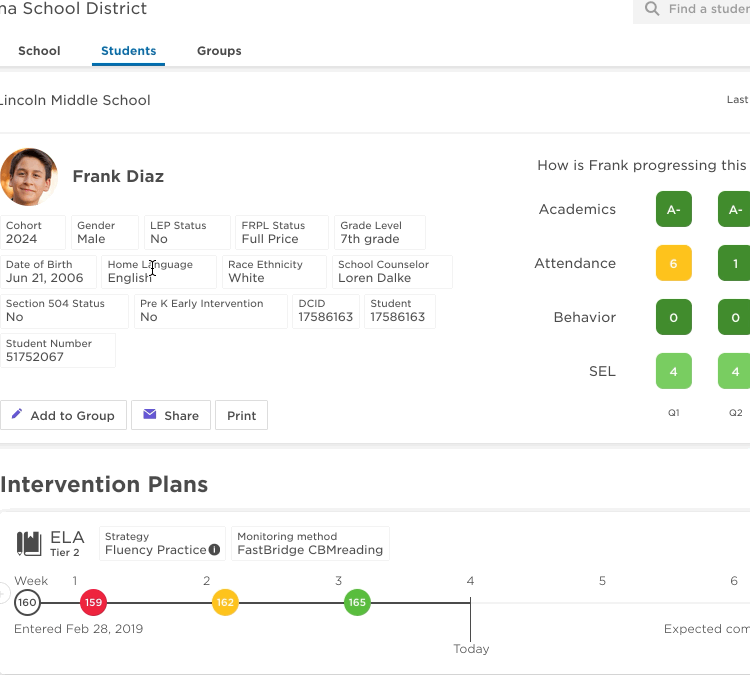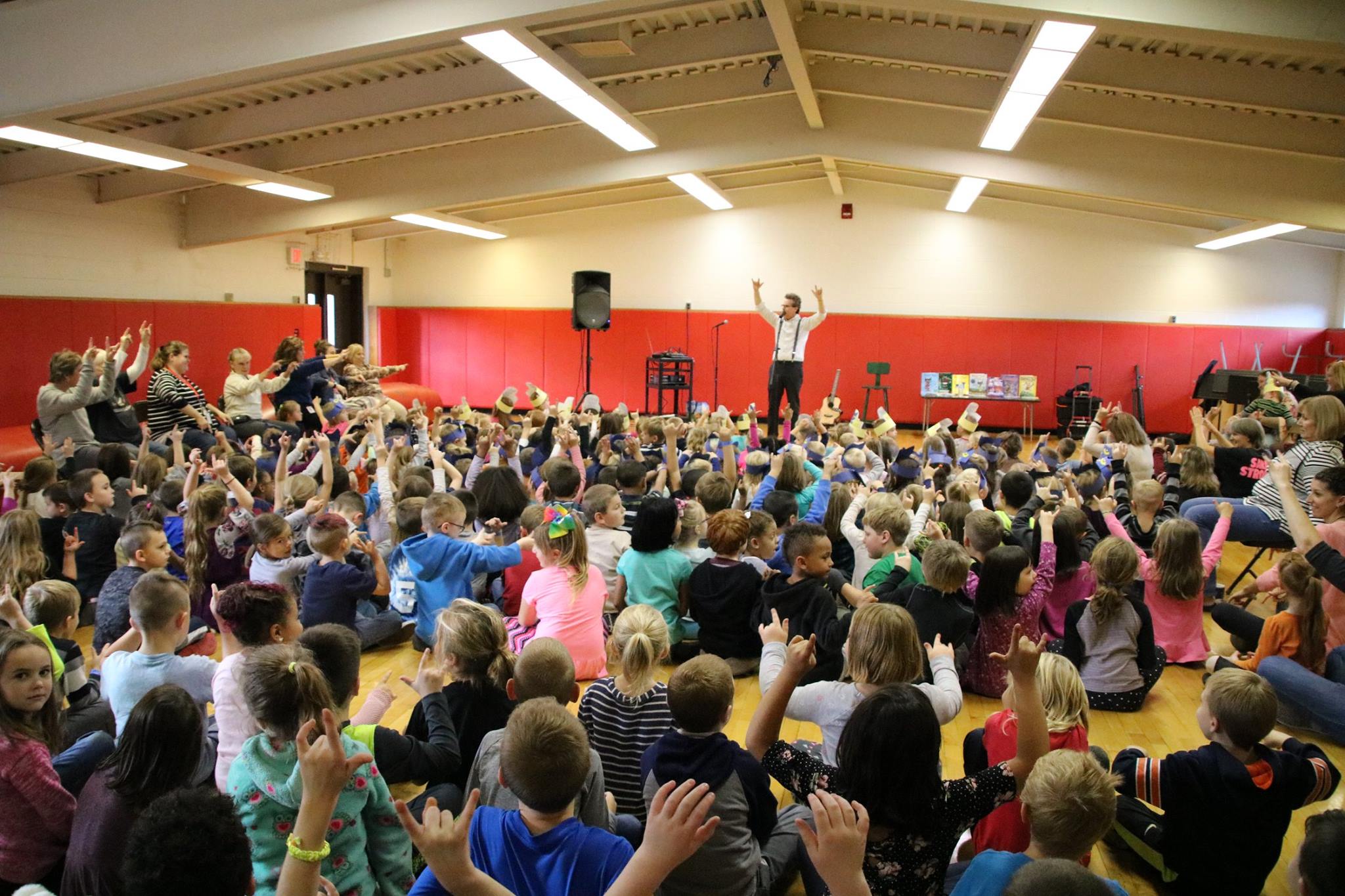 At Boston Public Schools, supporting holistic student success is a district-wide priority. Every child in every classroom is entitled to an equitable, world-class, high-quality education.
At Boston Public Schools, supporting holistic student success is a district-wide priority. Every child in every classroom is entitled to an equitable, world-class, high-quality education.
As the largest district in the state of Massachusetts, BPS is home to 50,000 students. Within the school community, about 30 percent of students are English language learners, 20 percent have disabilities, and 70 percent are economically disadvantaged.
Over the past two decades, BPS' district and school teams have placed a strategic focus on postsecondary readiness, eliminating opportunity gaps, and using equitable and anti-racist practices within a multi-tiered system of supports (MTSS).
We sat down with Monica Hogan, interim executive director at the Office of Data and Accountability, and David Fisher, a secondary schools analyst, to learn more about a key part of this process: empowering educators with streamlined data and tools to equitably support students.
Monica and David discussed the origins of BPS's focus on holistic student success, how they use Panorama Student Success at the district and school levels, and how they partnered with Panorama to respond to community needs during the early stages of the COVID-19 pandemic.
Read excerpts from our conversation below or watch the full webinar recording.
Keeping Secondary Students On Track for Graduation
Monica Hogan, Interim Executive Director at the Office of Data and Accountability: In 2007, our district commissioned a report that explored how we were supporting students who were ‘off track’ to graduate. The findings guided BPS in making several investments to better serve these students, and—as a result—we saw our graduation rate increased while our dropout rate decreased.
In 2018, we issued a follow-up report about these same students. We saw that although our overall rates were trending positively, there was still significant work to be done. There was a strong foundation of Student Support Team practices in place in our schools and really great work happening on the ground. But there was a lack of common tools for school teams to be using. Each school was doing something different based on who was on their team and what they happened to have access to, and this created gaps in terms of efficiency.
It was clear that there were also barriers when it came to providing data to educators in the district. We had a number of systems, but did not have one common place where educators could go to find holistic data on their students.
According to our districtwide data analysis, nearly 80 percent of our ‘off track’ students could be identified with a limited number of indicators either before or during 9th grade. We needed to find a way to put student data in the hands of our educators (and families) in a more efficient and streamlined manner so that they could take action sooner to support our ‘off track’ students.
Coinciding with this 2018 report was the development of districtwide indicators of postsecondary readiness. We convened a citywide working group of representatives from public schools, charter schools, non-profit organizations, and higher education institutions across Boston. Their task: to operationalize what it means to be college and career ready for young people in our city. This group helped to identify a set of indicators that we could measure and connect to postsecondary success using longitudinal data:
- Attendance: maintain an attendance rate of 94 percent or higher
- GPA: achieve a cumulative GPA of at least 2.7
- Participate in anytime/anywhere learning: complete an internship, job shadowing experience, or community service project
- Access to rigorous coursework: complete the Massachusetts Recommended Core Curriculum while also enrolling in at least one AP, IB, dual-enrollment or career and technical education course
These two bodies of work were happening at the same time, and really came together when we started working with Panorama and adopted the Student Success platform.
"There was a lack of common tools for school-teams to be using... we needed to find a way to put student data in the hands of our educators (and families) in a more efficient and streamlined manner so that they could take action sooner to support our students."
Monica Hogan, Interim Executive Director, BPS
Providing Equity of Support for Every Child, In Every Classroom, in Every School
David Fisher, Secondary Schools Analyst : Our mission at Boston Public Schools is that every child, in every classroom, in every school gets what they need.
From an equity lens, this means that we need to be able to identify if we are providing every child with what they need as early as possible. As opportunity gaps persist, especially for our Black and Brown students, our district faces systemic challenges that have been compounded by lost learning time due to the COVID-19 health crisis. We must take bold action using equitable and anti-racist practices embedded within our multi-tiered system of supports (MTSS).
The Panorama Student Success platform helps us ground our work to eliminate opportunity gaps, accelerate learning recovery with research, and proactively identify when we aren’t achieving our mission at the district, school, and classroom levels. It provides us with actionable data for educators and an assets-based scaffolding that we can work collaboratively with to respond to student data.
Providing Systems of Support to Ensure Equity

David Fisher, Secondary Schools Analyst: While this is not novel work at BPS, Panorama Student Success has allowed us to take major steps forward and build upon a strong foundation. Our teachers have a strong practice of using holistic student data to ensure that they’re partnering with students to ensure equitable outcomes. Student Success makes it more efficient for them to do this.
Our staff also works together to create plans that respond to student data. Student Success makes this collaboration simpler and helps to raise awareness of the work that everyone is doing.
For example: In the past, notes about how one teacher was working with one student towards specific goals may have been stored in a siloed document. By housing that information in Student Success, it becomes visible to colleagues and interwoven with our structures for how we collaborate with students.
As we strive to further embody anti-racist practices in our district, Panorama enables us to hone many years of training and best practices in a more consistent, asset-based structure.
Learn more about Panorama's Student Success platform.
Establishing a Uniform System
David Fisher, Secondary Schools Analyst: With Student Success, we are able to integrate our Student Information System with six different assessments. We are pulling together attendance, grades, and behavior data from our SIS and combining it with assessment scores, establishing a uniform system that provides school-level views for teachers and leaders to access data and take a collaborative approach to action through our system of supports.
-1.png?width=600&name=pasted%20image%200%20(2)-1.png)
That integration makes it possible for us to ask questions that triangulate across data sources. For instance, a teacher might ask: “I want to understand my students’ prior school experiences so that I can partner with them in the present.” We know that 9th grade is a critical year. For most of our students, it is their first year at a new school, and educators are trying to understand what students have in their proverbial backpack when they start the academic year.
To help answer this question, we know that we need to give our teachers access to data across attendance, grades, and mobility (e.g., have they changed schools). We were able to customize Student Success with the Panorama team to add a data set based on prior-year data and powerful new filters to make it easy for teachers to find this information.
"With Student Success, we are able to integrate our Student Information System with six different assessments. We are pulling together attendance, grades, and behavior data from our SIS and combining it with assessment scores, establishing a uniform system that provides school-level views for teachers and leaders to access data and take a collaborative approach to action through our system of supports."
David Fisher, Secondary Schools Analyst, BPS
Making Data Actionable and Monitoring Progress Collaboratively
David Fisher, Secondary Schools Analyst: Beyond the data integration component, Student Success helps us filter and understand our data at a variety of levels. We can look at our indicators for postsecondary readiness in 9th grade male students; we can examine IEP data; we can filter by demographic criteria integrated into the system. We can zoom in and look at specific students or look more broadly at school- or district-level data. Educators can then respond to the data that they’re seeing by logging support notes and creating Tier 2 and Tier 3 success plans. These are integrated into email alerts and within the platform to streamline communication.

This animation depicts demo data
We can also use Student Success to create and monitor the success of groups of students. This can be done by selecting a static list of students—the members of a debate team, for example. We can accomplish this by creating “smart groups,” a tool which generates a dynamic list of students who match a set of attributes based on filters.
In alignment with our mission and focus on postsecondary readiness indicators, this means that we can continuously monitor students who are in 9th grade, showed strong attendance last year, but are now declining in terms of their attendance rate. We can create a “smart group” with this set of criteria and share this group with the attendance team responsible for these students, allowing them to use data to take an asset-based frame for outreach with those students.
Responding to Community Needs During COVID-19
Monica Hogan, Interim Executive Director at the Office of Data and Accountability: On March 15, 2020, Boston Public Schools announced the closing of our schools for six weeks. Once we made this announcement, we immediately started distributing Chromebooks, setting up meal sites, and delivering paper materials to families and students.
It quickly became evident that there were additional needs we needed to support. We worked with Panorama to administer a family needs survey. The goal was to collect as many responses as possible and get supports directly to the families that needed them.
The survey was launched on April 3 in 10 different languages, and we received nearly 25,000 responses. This allowed us to rapidly mobilize in response to what students and families needed—whether it was Internet access, device access, meal delivery assistance, academic support, or a housing concern.
BPS then worked with Panorama to integrate these responses into the Student Success platform, with new filters based on what our families were telling us. Our schools could easily see who had requested additional academic support or additional wellbeing support and ensure that our behavioral health teams could follow-up with those students.
Ultimately, this enabled us to get actionable information into the hands of the individuals in our schools who were best positioned to help.




-3.png?width=60&name=circle-cropped%20(40)-3.png)
-1.png?width=60&name=circle-cropped%20(39)-1.png)



